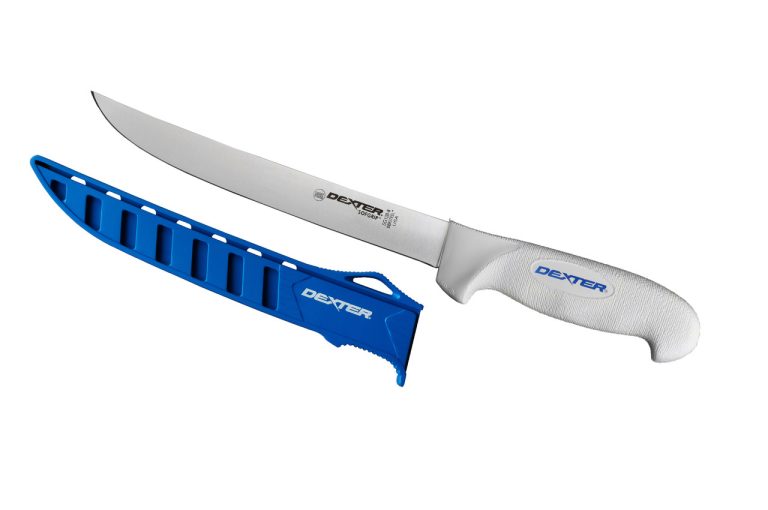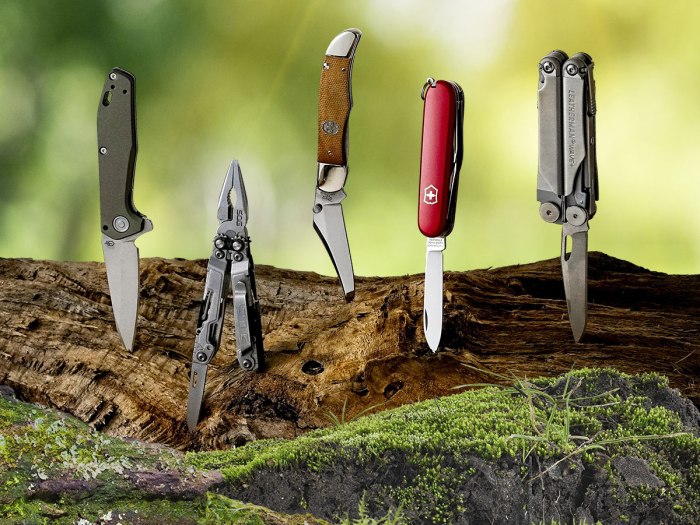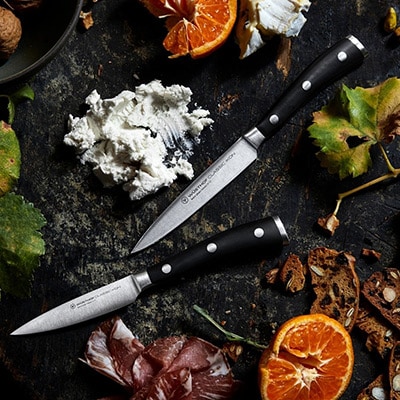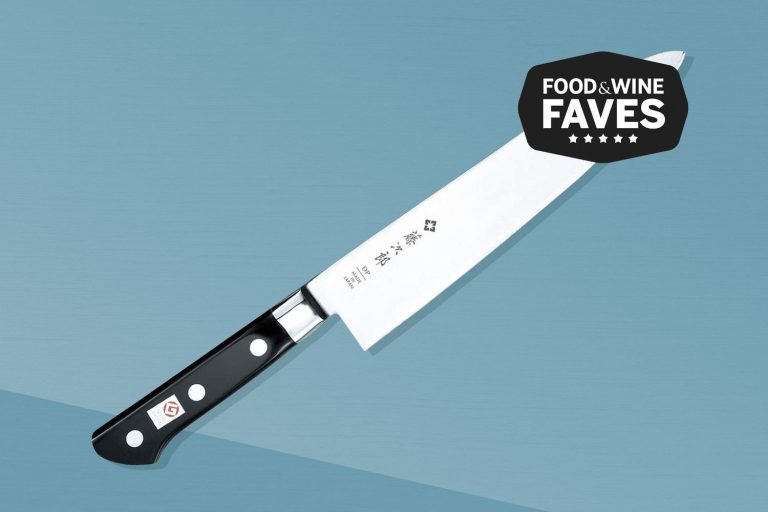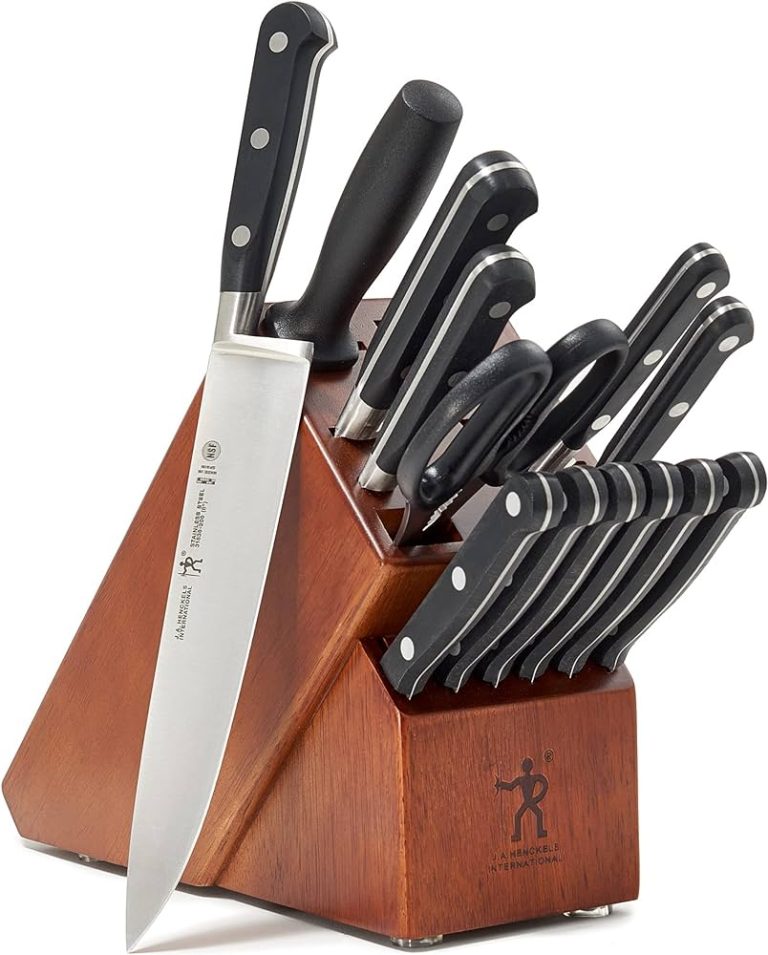Can You Survive in the Wilderness With Just a Knife?
Yes, it is possible to survive in the wilderness with just a knife. In such situations, a sturdy knife becomes an invaluable tool for hunting, fishing, building shelter, and preparing food.
The ability to effectively use a knife is crucial for survival, as it can help you create weapons, tools, and provide for your basic needs. However, proper wilderness survival skills, knowledge of the environment, and resourcefulness are also essential to increase your chances of survival.
While a knife alone may not guarantee survival, it can significantly enhance your ability to adapt and overcome challenges in the wilderness.
The Importance Of Proper Preparation
Proper preparation is crucial for surviving in the wilderness with just a knife. With the right skills and mindset, one can rely on this versatile tool to navigate, hunt, build shelter, and procure food, ensuring their survival in challenging outdoor environments.
Surviving in the wilderness with just a knife may sound like a thrilling adventure, but it’s crucial to approach it with the right mindset and adequate preparation. Whether you’re an experienced outdoorsman or a beginner, understanding the importance of proper preparation is key to ensuring your safety and increasing your chances of survival.
In this section, we’ll discuss three essential aspects of proper preparation: choosing the right knife for survival situations, the essential skills and knowledge needed for survival, and understanding the limitations of relying solely on a knife.
Choosing The Right Knife For Survival Situations
When it comes to surviving in the wilderness with just a knife, the type and quality of the knife you choose can make a significant difference. Here are some factors to consider:
- Blade material: Opt for a knife with a durable and corrosion-resistant blade material like stainless steel or carbon steel.
- Blade design: Choose a knife with a versatile blade design that can be used for various tasks such as chopping, slicing, and even carving.
- Tang: Look for a knife with a full tang, where the blade extends throughout the handle, as it provides better strength and durability.
- Size and weight: Consider the size and weight of the knife, ensuring that it is comfortable to carry and handle for extended periods.
Essential Skills And Knowledge Needed For Survival
Having the right knife is just the first step. Equipping yourself with essential survival skills and knowledge is vital. Here are some key areas to focus on:
- Shelter building: Learn how to construct different types of shelters using natural materials in order to protect yourself from the elements.
- Fire starting: Master different fire-starting techniques, including using a knife to create sparks and ignite tinder.
- Water procurement: Understand various methods of finding, collecting, and purifying water in the wilderness.
- Food foraging and hunting: Acquire knowledge about edible plants, trapping small game, and fishing to ensure your sustenance.
- Navigation: Develop navigation skills using natural signs, landmarks, and the sun’s position to find your way in unfamiliar territories.
- First aid: Learn basic first aid skills to treat injuries and maintain your health in emergency situations.
Understanding The Limitations Of Relying Solely On A Knife
While a knife is a versatile tool, it has its limitations. Here are a few factors to keep in mind:
- Self-defense: A knife can be useful for self-defense, but it should not be solely relied upon. Understanding other self-defense techniques is essential.
- Tool versatility: While a knife can aid in various tasks, some specialized tools may be more efficient or safer for certain activities.
- Preparedness: Relying solely on a knife forces you to be resourceful and creative, but it’s important to have additional tools, equipment, and supplies as part of your survival kit.
- Mental preparedness: Surviving in the wilderness requires mental strength and adaptability. Knowing how to stay calm, think critically, and make sound decisions is crucial.
Remember, survival in the wilderness is a challenge that requires careful planning, skill development, and a humble understanding of the limitations of relying solely on a knife. Prepare yourself adequately, gain the necessary knowledge and skills, and always prioritize safety when embarking on any wilderness adventure.
Stay tuned for the next section, where we will explore useful wilderness survival techniques.
Building Shelter And Starting A Fire
In the wilderness, survival with just a knife is possible. Learn how to build shelter and start a fire, essential skills for self-preservation.
Utilizing Your Knife To Build A Shelter
Building a shelter is crucial when surviving in the wilderness with just a knife. With the right techniques and resourcefulness, your knife can be your best tool for constructing a temporary home. Here are some tips on how to utilize your knife effectively for building a shelter:
Different Types Of Shelters For Various Wilderness Environments
In the wilderness, different environments call for different types of shelters. It’s important to adapt your shelter to the specific conditions you’re facing. Here are some common types of shelters you can create with just a knife:
- Lean-to Shelter: A simple and practical shelter that utilizes a sloping roof made from a tree branch or a tarp. It provides protection against wind and rain.
- A-Frame Shelter: This shelter is built by placing two sturdy branches in an “A” shape and covering them with leaves, ferns, or a tarp.
- Debris Hut Shelter: Good for colder temperatures, this shelter involves creating a framework with branches and then covering it with insulating materials like leaves, moss, or grass.
- Snow Cave: Ideal for snowy environments, a snow cave is created by digging into a snowbank, utilizing your knife to shape the entrance and interior.
Techniques For Starting A Fire Using Only A Knife
Starting a fire in the wilderness is crucial for warmth, cooking, and signaling for help. While it may seem challenging with just a knife, it’s entirely possible. Here are some techniques you can use:
- Fire Plow: Create a groove in a wooden board or branch and use your knife to firmly slide another stick back and forth along the groove. The friction generates heat, eventually igniting the tinder.
- Bow Drill: Craft a bow with a flexible branch and use a cordage made from vines or your clothing. Attach a wooden spindle to the cordage, then use the bow to rotate the spindle against a fireboard. The friction will produce an ember that can ignite the tinder.
- Hand Drill: Similar to the bow drill, but without the bow. Use your knife to create a spindle and a fireboard. Place the spindle against the fireboard and rapidly rotate it between your hands, generating friction and a smoking ember which can be used to start a fire.
Remember, mastering fire-starting techniques using just a knife requires practice, patience, and proper tinder preparation.
With these shelter-building and fire-starting techniques, you can increase your chances of survival in the wilderness armed with just a knife. Adapt to your environment, stay resourceful, and make the most of your tool.
Finding And Preparing Food And Water
Surviving in the wilderness solely with a knife requires resourcefulness and skill. From foraging edible plants to purifying water sources, adept preparation and knowledge are crucial for ensuring your survival. Discover how to find and prepare food and water to sustain yourself in the untamed wilderness.
Can You Survive In The Wilderness With Just A Knife?
Embarking on a wilderness adventure with only a knife may seem like a daunting feat, but in dire situations, it can be a real test of survival skills. One of the biggest concerns when left in the wild is finding and preparing food and water.
In this section, we will explore the various ways you can sustain yourself in the wilderness with just a knife.
Identifying Edible Plants And Berries:
In the vast expanse of nature, there are edible plants and berries that can provide sustenance. Here are some ways to identify them:
- Familiarize yourself with common edible plants and berries in the area: Knowledge about local flora is crucial for survival. Learn to identify plants such as dandelion, cattail, and wild strawberries.
- Observe the shape, color, and scent of the plants and berries: Pay attention to distinguishable features that can help you determine if a plant or berry is edible or poisonous.
- Conduct a skin test: Rub a small part of the plant or berry on your skin and wait for a reaction. If there is no adverse reaction after a few minutes, it may be safe to eat.
- Follow the “Universal Edibility Test”: If you are uncertain about a plant or berry, you can perform this test to minimize the risk of toxicity. This involves a series of steps to check for any signs of illness or discomfort.
Catching And Preparing Small Game:
In addition to plants and berries, hunting small game is another way to sustain yourself. Here’s what you need to know:
- Craft simple traps: Utilize your knife to create snares or traps to catch small animals like rabbits or squirrels. Set them in areas with signs of animal activity, such as tracks or nests.
- Learn effective hunting techniques: Mastering hunting techniques like stalking and camouflage can significantly increase your chances of catching small game.
- Prepare the catch: Use your knife to skin and gut the animal properly. Be cautious when handling wild game as improper preparation can lead to the spread of disease.
Techniques For Purifying Water In The Wilderness:
Water is essential for survival, but in the wilderness, it may not always be readily available. Follow these techniques to purify water using only a knife:
- Boiling: Collect water from a natural source and bring it to a rolling boil using a container or by heating stones in a fire. Boiling eliminates harmful microorganisms.
- Filtering: Use your knife to create a basic filter by layering materials like grass, sand, and charcoal. This helps remove sediment and some impurities from the water.
- Solar disinfection: If you have access to sunlight, you can purify water by placing it in a clear container and exposing it to direct sunlight for several hours. UV rays will kill bacteria and other pathogens.
With these techniques, you can increase your chances of survival in the wilderness armed with nothing but a knife. Remember to stay calm, resourceful, and vigilant.
Navigating And Signaling For Rescue
Surviving in the wilderness with just a knife? Learn the importance of navigating and signaling for rescue to increase your chances of survival. With essential skills and resourcefulness, you can leverage a knife as a tool for survival in the wild.
Can You Survive In The Wilderness With Just A Knife?
In a survival situation, having only a knife can seem like a daunting challenge. However, with the right skills and knowledge, it is possible to navigate and signal for rescue using just this simple tool. We will explore how you can use your knife to create tools for navigation, learn basic orienteering and map reading techniques, as well as signaling for rescue using available resources.
Using Your Knife To Create Tools For Navigation:
- Craft a rudimentary compass by magnetizing a makeshift needle with your knife and floating it on a leaf or in a container of water. This simple tool can provide a general sense of direction.
- Carve marker sticks with distinct symbols or letters to mark your trail as you navigate through the wilderness. This will help you avoid getting lost and allow for easy retracing of your steps.
- Use your knife to create notches in trees or rocks to indicate important landmarks or points of interest. These visual cues can be invaluable when navigating unfamiliar territory.
Basic Techniques For Orienteering And Map Reading:
- Familiarize yourself with basic map symbols and legends. This will enable you to understand the information conveyed by the map and use it to plan your route.
- Use your knife to fashion a simple protractor by carving a circle with degree markings onto a piece of wood or plastic. This improvised tool can help you determine angles and bearings on a map.
- Employ triangulation techniques by identifying landmarks on the map and in your surroundings. By taking bearings to these landmarks using your improvised protractor, you can pinpoint your exact location.
Signaling For Rescue Using Available Resources:
- Carve a whistle from a sturdy piece of wood or animal bone to amplify your calls for help. This will maximize the chances of being heard by potential rescuers in the wild.
- Create reflective signals by polishing the blade of your knife until it shines brightly. Use the reflection to catch the attention of search parties or passing aircraft during daytime.
- Build signal fires using branches, leaves, and other combustible materials. Use your knife to assist in gathering and preparing these resources, ensuring your fire produces thick smoke for maximum visibility.
Remember, surviving in the wilderness with just a knife requires resourcefulness, adaptability, and a solid understanding of basic survival skills. By utilizing your knife to create navigation tools, mastering orienteering techniques, and employing effective signaling methods, you significantly increase your chances of being rescued and returning safely.
Stay calm, stay prepared, and embrace the challenges that nature presents. You have the power to overcome them with your trusty knife.
Protecting Yourself From Wildlife And Injuries
Learn how to protect yourself from wildlife and avoid injuries in the wilderness by relying solely on a knife. Gain survival skills without common phrases or overused expressions. Discover the secrets to surviving in the wilderness with just a knife.
Knife Techniques For Defending Against Wild Animals:
- Slashing: A quick and aggressive slashing motion with your knife can deter most wildlife. Aim for vulnerable areas like the face or legs to scare off potential threats.
- Thrusting: If you find yourself face to face with a larger animal, use a firm and controlled thrusting motion to keep it at a distance. Aim for the chest or abdomen for maximum impact.
- Creating Noise: Your knife can be used as a tool to create loud noises by tapping it against rocks or trees. Most animals are afraid of loud and sudden sounds, and this can scare them away.
- Showing Dominance: Hold your knife up in a confident manner to show dominance and deter animals. This can help assert your position as the alpha and prevent any unwanted encounters.
First Aid Tips For Treating Common Injuries:
- Cuts and Lacerations: Clean the wound with clean water and apply pressure to stop bleeding. Use a sterilized cloth or bandage to cover the wound and seek medical aid as soon as possible.
- Sprains and Strains: Rest the injured body part and apply an ice pack if available to reduce swelling. Use compression with an elastic bandage and elevate the injured area to minimize pain and promote healing.
- Animal Bites and Stings: Rinse the affected area with water and soap to clean the wound. Apply a cold compress to reduce swelling and pain. If necessary, seek immediate medical attention to prevent infection.
Creating Basic Tools And Weapons For Self-Defense:
- Rock Slingshot: Gather a sturdy piece of cloth or cut a strip from your clothing. Place a small rock in the center and tie the ends of the cloth together. Swing the sling in a circular motion and release to throw the rock at a distance, deterring wildlife.
- Sharpened Stick: Sharpening a wooden stick with your knife can create a useful makeshift spear for self-defense. Use it as a poking tool to keep animals at bay and maintain a safe distance.
- Fire-Making Tool: Use your knife to create sparks by striking it against a rock or a piece of flint. With the right tinder and kindling, you can start a fire, which acts as a deterrent for many wildlife species.
Remember, while these techniques and tools can be helpful in wilderness survival, it is always best to avoid dangerous encounters with wildlife and prioritize your safety.
Staying Mentally And Physically Strong
Surviving in the wilderness armed with just a knife requires mental and physical strength. With proper training and preparation, you can navigate the challenges and ensure your survival.
Mental Resilience In Survival Situations
Mental resilience plays a crucial role in the wilderness, where challenges and adversity can put your survival skills to the test. Here are some key points to consider:
- Stay focused: Maintaining mental clarity and focusing on critical tasks helps you make rational decisions in challenging situations.
- Manage fear and stress: Developing techniques to manage fear and stress can help you stay calm and collected.
- Practice mindfulness: Mindfulness exercises, such as deep breathing and grounding techniques, can help reduce anxiety and keep your mind focused on the present moment.
- Build self-confidence: Trusting in your abilities and embracing a positive mindset can contribute to your mental resilience.
- Adaptability: Being open to change and adaptable to unexpected circumstances can boost your mental resilience in survival scenarios.
Physical Fitness And Endurance For Wilderness Survival
Having good physical fitness and endurance is essential when relying solely on a knife in the wilderness. Here are a few things to consider:
- Build strength and stamina: Engaging in regular physical activities, such as cardio exercises, strength training, and hiking, can improve your overall physical fitness and endurance.
- Develop agility and flexibility: Incorporating exercises that enhance agility and flexibility can be beneficial in navigating rough terrains or contorting into tight spaces during survival situations.
- Improve hand-eye coordination: Practicing hand-eye coordination exercises can enhance your ability to perform precise tasks with your knife in the wilderness.
- Increase cardiovascular fitness: Focus on exercises that elevate your heart rate and improve overall cardiovascular fitness, allowing you to endure physically demanding situations.
Tips For Maintaining Morale And Staying Motivated
Keeping your morale high and staying motivated can significantly impact your survival in the wilderness. Here are a few suggestions to help you maintain your morale and motivation:
- Set achievable goals: Create smaller, achievable goals that can provide a sense of accomplishment and keep you motivated.
- Find joy in small victories: Celebrate the small victories, such as successfully starting a fire or finding a source of clean water, as they can boost morale.
- Stay positive: Maintaining a positive mindset can help you overcome challenges and setbacks more effectively.
- Take breaks and rest: Prioritize rest and relaxation to avoid burnout and recharge both physically and mentally.
- Stay connected to your purpose: Remind yourself of the reasons why you want to survive and stay connected to your purpose throughout your journey in the wilderness.
Remember, surviving in the wilderness with just a knife is no easy feat. It requires mental resilience, physical fitness, and unwavering motivation. By focusing on these areas, you can enhance your chances of enduring and thriving in this challenging environment.
Real-Life Stories Of Survival With Just A Knife
Discover the awe-inspiring real-life experiences of survivalists who thrive in the wilderness armed with nothing but a knife. This riveting account challenges the notion of modern dependence and showcases the indomitable human spirit.
Inspiring Tales Of People Who Survived Using Only A Knife:
- Former FBI special agent, Tom Brown: Tom Brown found himself in a life-threatening situation when he got lost in the dense forests of New Jersey. With only a survival knife, he managed to construct shelter, start a fire, and forage for food. His resourcefulness and quick thinking led to his safe return.
- Explorer, Aron Ralston: Aron Ralston’s incredible story of survival became widely known when it was adapted into the film “127 Hours.” After a canyoneering accident left his arm trapped under a boulder, Ralston resorted to using his knife to amputate his own arm in order to free himself. Despite the immense pain and trauma, his survival instinct prevailed.
- Lumberjack, Joe Simpson: Joe Simpson’s harrowing experience in the Peruvian Andes was documented in his book “Touching the Void.” When Simpson fell into a crevasse and was left for dead by his climbing partner, he relied solely on his knife to overcome treacherous terrain and make his way back to safety.
Lessons Learned From Their Experiences:
- Adaptability is key: These survival stories highlight the importance of being able to adapt to changing circumstances in the wilderness. Having just a knife requires individuals to utilize their surroundings and improvisation skills to thrive.
- Mental resilience is crucial: The mental strength and determination displayed by these survivors played a vital role in their ability to persevere. The challenges they faced demanded unwavering mental resilience and the ability to stay focused even in dire situations.
- Resourcefulness is essential: With only a knife as their tool, these survivors had to tap into their resourcefulness to fulfill their basic needs. From building shelters to finding food and water sources, resourcefulness was paramount to their survival.
- Survival skills are invaluable: Each of these individuals possessed a deep understanding of survival techniques, enabling them to maximize their chances of survival with minimal equipment. Knowledge of fire-starting techniques, navigation, and wilderness first aid proved to be invaluable during their ordeals.
- The power of mindset: These stories demonstrate the power of a positive mindset in the face of adversity. Believing in their ability to overcome challenges, these survivors exemplify the importance of maintaining a resilient and determined mindset when confronted with life-threatening situations.
Understanding The Mindset And Resourcefulness Required:
- Mental fortitude: Surviving in the wilderness with just a knife requires a strong mental fortitude. It demands an unwavering belief in one’s ability to endure and overcome challenges, even when faced with extreme conditions and limited resources.
- Adaptability: Thriving in the wild with minimal tools necessitates adaptability. Being able to quickly assess and adjust one’s strategies based on the environment and available resources is vital.
- Resourcefulness: With only a knife at their disposal, resourcefulness becomes a critical skill. Being able to think creatively, improvise, and make the most of limited resources is essential for survival.
- Basic survival knowledge: Understanding basic survival techniques, such as shelter-building, fire-starting, and identifying edible plants, is fundamental when relying solely on a knife for survival. Acquiring and honing these skills increases the chances of staying alive in the wild.
- Respect for nature: Surviving in the wilderness with just a knife requires a deep respect for nature. Recognizing and adapting to nature’s rhythms, understanding its dangers, and minimizing environmental impact are crucial elements to ensure survival.
These real-life survival stories serve as a testament to the incredible human capacity for resilience, adaptability, and resourcefulness. While finding oneself in a wilderness scenario armed with only a knife is undoubtedly a daunting prospect, these tales demonstrate that with the right mindset and skills, survival is possible.

Credit: www.amazon.com
Frequently Asked Questions Of Can You Survive In The Wilderness With Just A Knife?
How Can A Knife Be Used For Survival?
A knife can be crucial for survival: hunting, self-defense, food preparation, toolmaking, and emergency situations.
Why Do You Need A Knife In The Wilderness?
A knife is essential in the wilderness for tasks like cutting wood, preparing food, and self-defense.
Can You Use A Survival Knife For Self-Defense?
Yes, a survival knife can be used for self-defense due to its sharpness and versatility.
Is A Pocket Knife Good For Survival?
Yes, a pocket knife is good for survival due to its portability and versatility in various situations.
Conclusion
Surviving in the wilderness with just a knife is a daunting challenge, but one that can be accomplished with the right skills and mindset. The versatility of a knife provides the basic tools needed for shelter, fire, and food procurement.
With the ability to fashion shelter using natural materials, create fire through friction, and hunt or trap for food, a knife becomes a survival necessity. However, it is important to remember that survival skills are crucial. Knowing how to recognize edible plants, navigate without a GPS, and understand the behavior of wild animals is just as vital as having a knife.
While a knife can be a lifesaver, it should not be relied upon as the sole means of survival. It is also important to note that survival situations require staying calm, thinking clearly, and making wise decisions. So, while a knife is a valuable tool in the wilderness, it is ultimately the survival skills and determination of the individual that plays the most significant role in enduring such challenges.

